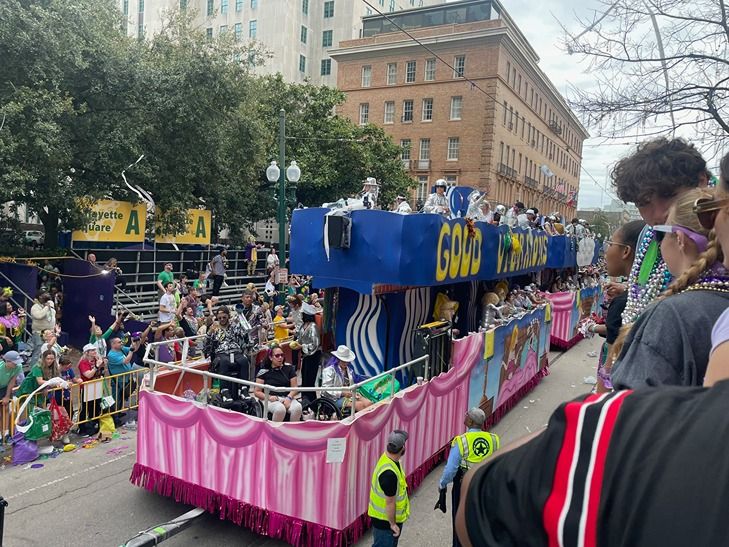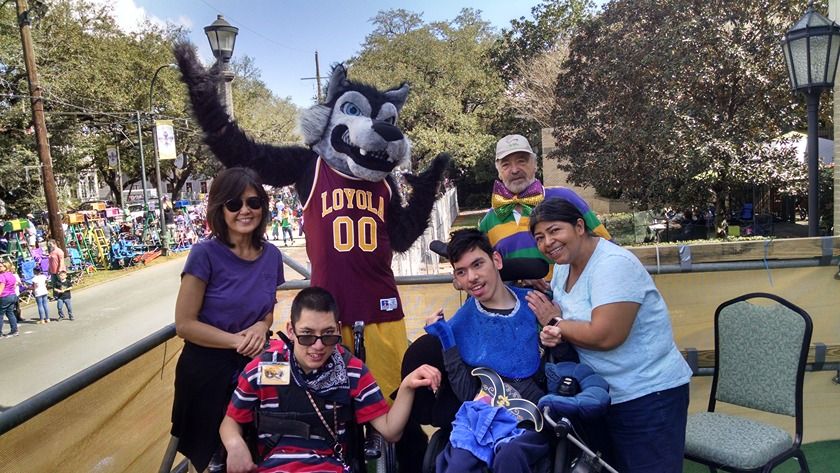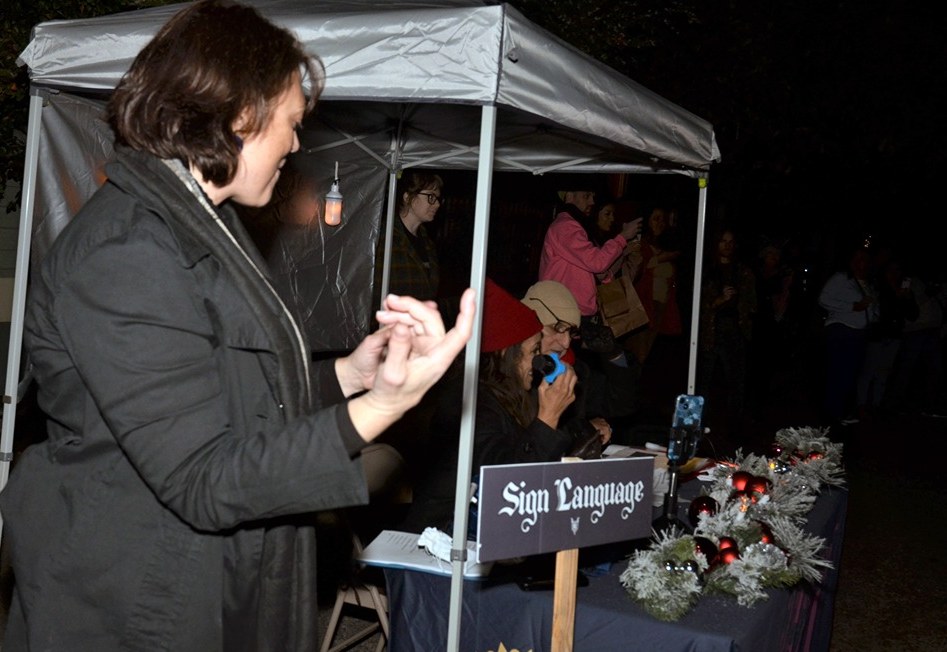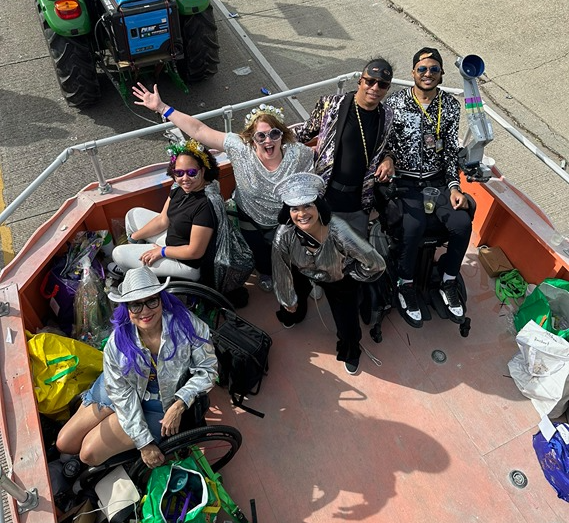Disability Inclusion Ensures Mardi Gras Fun for All Y'all
Mardi Gras brings people from all walks of life together for a shared sense of festivity, tradition, and community. But people with disabilities face significant barriers that prevent them from experiencing the joy and inclusivity that Mardi Gras promises.
Some krewes and local organizations have made strides to ensure that people with disabilities can also les bon temps rouler, but there is still significant work to be done.
Our historic streets, the crowd density of Mardi Gras, and overall limited viewing space—not to mention the territorial nature of the ironically named neutral ground—all contribute to the difficulties of disabled citizens enjoying Mardi Gras. However, there are some viable options for both viewing and participating, thanks to some local organizations trying to make it work.

VIEWING ACCESSIBILITY
There are very limited occasions for people with disabilities to enjoy a separate designated area for watching parades, and those few options require research and planning. You can purchase viewing stand tickets that may offer accessible seating for wheelchairs, but there is no guarantee and it is first come, first served. It is difficult to find accurate, updated information for this, so the best thing to do is to call one of the vendors who sell the grandstand seats along St. Charles Avenue to discuss accessibility options.
One of the few clearly designated and openly promoted options for accessible viewing is through Touro Synagogue, who hosts the Krewe of VIPs, a community initiative that offers free, wheelchair-accessible parade stands for children and adults with disabilities. Their St. Charles Avenue VIP Balcony is an accessible balcony provided free of charge to children, and sometimes adults, with disabilities and their families during some Mardi Gras parades. To sign up to help or to reserve a spot for a child, contact the Touro Synagogue office at 504-895-4843.

According to former TV Chief Meteorologist Carl Arredondo, two of the best examples of accessible viewing accommodations are not at Mardi Gras parades but can serve as models for what he hopes may someday be a normal part of the season. While escorting a visually impaired tourist to Jazz Fest—an event he had avoided for years—he learned of their well-organized, high-quality accessibility options, from viewing areas near the VIP stage sections to high quality high functioning bathrooms designed to support every impairment.
The other positive experience he had was with the Krewe of Krampus, which holds its annual Krampus parade each December. During the pandemic, he learned they were producing a stationary parade, enabling parade viewers to drive by the parade and experience it from the safety of their vehicles. This idea appealed to Arredondo, who, at the time, was working with Lighthouse for the Blind and WRBH, Reading Radio for the Blind and Visually Impaired. After talking with Krampus founders Michael and Diana Esordi, he was asked to be their narrator for the visually impaired audience portion of the parade. He is now one of their biggest fans and promoters of Krewe of Krampus' Accessibility Row, a two-block section along the parade route designated for people with limited mobility, which also includes a host providing audio descriptions of the parade, an American Sign Language (ASL) interpreter, and a "Quiet Zone" for children with sensory processing needs. They even created a "No Throws" graphic for parade goers to print and use if they would rather not have this interaction.

"There's just no feeling like when you realize someone has thought of your situation and is figuring out a way to help you out," said Arredondo, now a certified CrossFit L1 coach (COMS, AIT, CF-L1) who, among other ventures, coaches adaptive athletes.
Like the Krampus pivot during COVID, the Floats in the Oaks in City Park, as well as the inventive house floats and "Yardi Gras," created new accessible options. But once COVID ended, so did the ability for many of our disabled friends to join in the "Greatest Free Show on Earth."
The countless emails that Krampus organizers received from grateful parade goers after their stationary parades inspired them to find a way to continue to be inclusive. Krampus co-founder Diana Esordi, who earned a certificate from the University of Michigan in Disability Inclusion and Accessible Design and is pursuing a Disability Studies and Inclusion Certificate from City University of New York (CUNY), astutely pointed out that the accommodations they are making for parade viewers are equally important for parade participants. "We are all getting older, and we want to continue to find creative ways for ourselves and our members to participate, despite limited mobility or other disabilities."
Speaking of inclusive parade participation, here are a few hopeful signs:

• Since 2020, the Krewe of Tucks has included a wheelchair-accessible float for members and their families with special needs.
• The Krewe of King Arthur modifies floats by adding platforms, reinforcements, and security straps for riders who use wheelchairs. They have several visually impaired members who have recruited others, assuring them that the krewe is supportive of members with disabilities.
• Walking parades, by their very nature, are more accessible for those with mobility or other issues. They are often slower moving, cover smaller distances, and have more flexibility. Many of these parades focus on creativity and community involvement, and they welcome participants of all abilities, finding innovative ways to accommodate and celebrate everyone involved.

